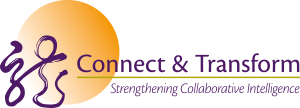Humanizing the Corporation: A Regenerative Leadership Playbook
What is the book about?
This book offers managers a clear framework for transitioning from sustainable to regenerative strategies.
Who is it for?
The book is written for current and future leaders who make decisions about strategy, collaboration, diversity, change, organizational design, performance, and talent development. It offers an alternative to the industrial thinking model we have long considered the norm.
Why this book?
Few resources exist on regenerative leadership. Existing works often focus on system changes or offer superficial guidelines without in-depth principles. This book aims to bridge this gap with a practical, principle-driven approach.
What makes this book different?
The book consists of short memos from the perspective of a regenerative CEO. The memos highlight organizations’ choices to work regeneratively, and how thinking and systems influence each other. It offers a framework of seven principles:
- Reciprocal empathy – Building a sense of environmental evolution and possibilities
- Ecosystem integrity– (Re)designing circular value flows
- Co-creation – Building collaborative intelligence
- Caring leadership – Strengthening diversity and inclusion
- Embracing ambiguity – More effective change management
- Perpetual design – Continually tinkering with your organizational design
- Critical reflexivity – Future-oriented performance and talent management
Each principle is discussed based on the interaction between system choices and the thinking underlying them. This allows you to make robust and future-oriented choices.
Difference with industrial leadership
Traditional leadership, rooted in industrial principles, controls thinking through imposed systems. Regenerative leadership, on the other hand, utilizes natural dynamics and requires the leader and the team to act based on principles.
No set recipes, but customization
The book offers inspiration, not a blueprint. Each reader can work from their context and timing. It contains stories of organizations that apply regenerative principles, not as “best practices”, but as inspiration for unique paths.
In conclusion
The book ends with an overview of principles and dynamics so leaders can chart their own course. A bibliography offers tools for further deepening in regenerative leadership.
This is a roadmap. It invites leaders to take responsibility and do the work themselves, with an eye to their unique situation and the future.
You can find more information on the books webpage.
The book also serves as background material for the Fourth module of the Dynamic Collaboration Deep Immersion Program.
The book is available through your local Amazon website.

